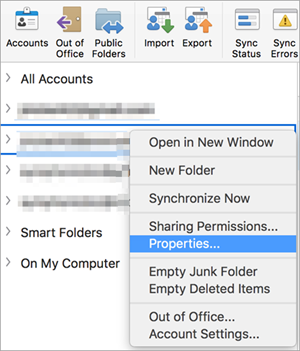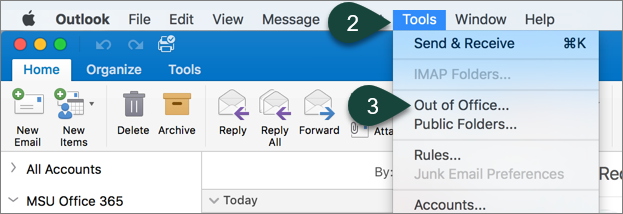

- Archive email microsoft outlook for mac version 16.10 archive#
- Archive email microsoft outlook for mac version 16.10 code#
- Archive email microsoft outlook for mac version 16.10 plus#
- Archive email microsoft outlook for mac version 16.10 professional#
Outlook 2003 is plumb out of luck when it comes to archive mailboxes. Office 365 Plans E1 and E2 don’t include Office 2010 either, but Plans E3 and E4 do include Office 2010 Professional, so you get the right version of Outlook 2010 to access an archive mailbox (in the U.S., the step-up from Plan E2 to E3 is from $16 to $24). However, Plan P1 does include a 25GB archive mailbox that you won’t be able to use unless you have the right version of Outlook. To keep costs down, doesn’t include Outlook 2010 as it relies on OWA as its basic client. The unfortunate thing in all of this is that users of Office 365 Plan P1 who are the proud possessors of a version of Outlook 2010 might find that it’s not quite enough.
Archive email microsoft outlook for mac version 16.10 plus#
I guess it’s the Plus that makes all the difference.
Archive email microsoft outlook for mac version 16.10 professional#
My experience is that Outlook 2010 Professional Plus is the most reliable version when archives are concerned. These versions connect to Exchange 2010 and will open the primary mailbox but will splendidly ignore the archive mailbox. What’s for sure is that you shouldn’t expect to access an archive mailbox if you have the versions of Outlook 2010 included in Microsoft Office Home and Business 2010 or Professional 2010. However, “stand-alone” is a curiously imprecise term.
/cdn.vox-cdn.com/uploads/chorus_asset/file/9468935/outlookforwindows.png)
For example, if you purchase and use the version of Outlook that comes with the Student or Home packages, perhaps to use with a home computer, you won’t be able to access your archive mailbox. Not all versions of Outlook 2010 or Outlook 2007 can connect to an archive mailbox, even if fully patched. Outlook 2007 is restricted to just displaying the archive mailbox linked to the primary mailbox and cannot open those associated with delegates. Ah well, the help desk will cope.Īpart from retention policies, another difference between Outlook 2010 and Outlook 2007 is that Outlook 2010 is able to display the archive mailboxes for multiple users, so it can handle the situation where a user has delegate access to other mailboxes and those mailboxes are archive-enabled. The problem arises when users suddenly discover that items “disappear” from their primary mailbox and turn up in the same folders in the archive mailbox.

This is acceptable if you take the stance that you don’t really want to bother users with details. In other words, while you can use the latest version of Outlook 2007 SP2 patched with the February 2011 cumulative update to open and work with archive mailboxes, you won’t be able to see any detail of the retention policy that applies to a mailbox or the retention tags that are specified for the policy. Outlook 2007 only satisfies the top two items. View associated retention policies and tags that control how items are automatically moved from the primary mailbox into the archive mailbox.Enable user interaction with the contents of the archive mailbox in exactly the same manner as other repositories (primary mailbox and PSTs).
Archive email microsoft outlook for mac version 16.10 code#
And indeed, apart from the caveat about Outlook 2010 versions explained below, if you deploy these clients, you will have no problem dealing with archive mailboxes because the clients include all of the necessary user interface and other code required to: Naturally, Microsoft’s perspective is that you should use the latest and greatest clients, meaning Outlook 2010 or Outlook Web App (OWA). One question that has to be answered in any Exchange 2010 or Office 365 deployment project is what clients to use.

People haven’t quite figured out how best to deploy and manage these repositories or whether they provide a better solution for long-term data retention than the third-party products available for Exchange 2010 and earlier versions. I think that this points to a certain lack of familiarity that still exists around archive mailboxes. My post describing the issues that can arise when you enable an Exchange 2010 mailbox to have an archive is one of the most actively discussed on this blog.


 0 kommentar(er)
0 kommentar(er)
